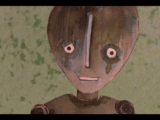Stop motion animation is a filmmaking technique that has fascinated audiences for over a century. By manipulating objects frame by frame, filmmakers create the illusion of movement, leading to some of the most iconic and beloved films in cinema history. This article explores the origins of stop motion, from its earliest experiments to its development through the 1980s.
The Early Days: 19th Century Experiments
The roots of stop motion animation can be traced back to the late 19th century, when inventors and filmmakers began experimenting with motion picture technology. One of the first recorded uses of stop motion was by Albert E. Smith and J. Stuart Blackton in their 1898 film The Humpty Dumpty Circus, which featured acrobatic toy figures brought to life. Unfortunately, no known copies of this film survive today.
Another pioneering work was The Haunted Hotel (1907) by J. Stuart Blackton, which showcased early special effects using stop motion. Around the same time, Émile Cohl, a French animator, was experimenting with animated drawings, which influenced stop motion techniques.
Georges Méliès and the Magic of Stop Motion
One of the most influential figures in early cinema, Georges Méliès, played a crucial role in the development of special effects, including stop motion animation. Méliès, a magician turned filmmaker, is best known for his groundbreaking film A Trip to the Moon (1902), which utilized various in-camera effects, including substitution splicing, to create magical and surreal visuals. His pioneering work laid the foundation for stop motion techniques by demonstrating how frame-by-frame manipulation could bring objects to life. His contributions inspired future animators to explore the possibilities of the medium.
The 1910s-1930s: The Rise of Stop Motion
During the 1910s and 1920s, stop motion techniques became more refined. Wladyslaw Starewicz, a Russian filmmaker, is often credited as one of the first to use puppets in stop motion with his 1912 film The Cameraman’s Revenge, featuring intricately animated insects.
By the 1920s, Willis O’Brien became a key figure in the field. His work on The Lost World (1925) and, most notably, King Kong (1933) set a new standard for stop motion effects, blending animation with live-action sequences in an unprecedented way. His innovative use of armatured models (skeletons covered in rubber and latex) allowed for smoother and more realistic movement.
The 1940s-1960s: Ray Harryhausen and the Golden Age
Following in O’Brien’s footsteps, Ray Harryhausen became the most influential stop motion animator of his time. Starting with Mighty Joe Young (1949), he went on to create iconic sequences in films like The 7th Voyage of Sinbad(1958) and Jason and the Argonauts (1963). His technique, known as Dynamation, involved splitting foreground and background elements to integrate stop motion creatures into live-action more seamlessly.
Meanwhile, in Eastern Europe, animators like Jiří Trnka and Karel Zeman were producing stunning stop motion films that elevated the art form, such as The Hand (1965) and The Fabulous Baron Munchausen (1962), respectively.
The 1970s-1980s: Advancements and Cult Classics
The 1970s saw stop motion continue to evolve with more sophisticated techniques and new applications in feature films. One of the most well-known uses of stop motion during this period was Phil Tippett’s work on Star Wars: A New Hope(1977), where he animated the iconic chessboard sequence.
In 1981, Tippett revolutionized the field once again with Go Motion, an advanced form of stop motion that incorporated slight motion blur to make movements appear smoother. This technique was used in Dragonslayer (1981) and later in The Empire Strikes Back (1980) for the AT-AT walkers on Hoth.
During the 1980s, stop motion continued to thrive in both feature films and television. Tim Burton’s Vincent (1982) and Henry Selick’s early works paved the way for a new generation of animators. Meanwhile, TV shows such as The Wind in the Willows (1983) showcased high-quality stop motion storytelling.
Conclusion
From its humble beginnings in the late 19th century to the technical innovations of the 1980s, stop motion has played a crucial role in the evolution of cinema. Visionaries like Willis O’Brien, Ray Harryhausen, and Phil Tippett transformed this painstaking technique into an art form that continues to inspire animators and filmmakers today.
While the advent of CGI in the 1990s shifted the industry toward digital effects, stop motion remains a beloved and respected medium, with modern masterpieces like The Nightmare Before Christmas (1993) and Coraline (2009) proving its enduring appeal.




